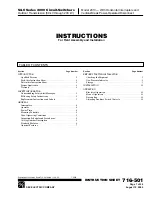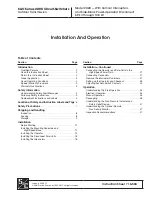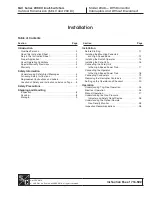
1
INSTRUCTION MANUAL
Ver.2.1a
Nishi-Shinjuku Kimuraya Bldg., 7-5-25
Nishi-Shinjuku,
Shinjuku-ku, Tokyo 160-0023 Japan Phone:
(03)3364-7055
For more detailed information please ask for the nearest
distributor or the following sales center.
Thank you for purchasing a
NIDEC COPAL ELECTRONICS CORP. product.
For proper and optimal use of the product, please read
this manual thoroughly before using.
Keep this manual for future reference.
DISPLAY TYPE PRESSURE SWITCH
PS30
Important Information and Warnings
①Non-corrosive gases should be used as pressure media for PS30.
②The maximum applicable pressure for the PS30-102R at the time of vacuum break is 500kPa.
③Always carry out wiring work with the power off.
④For stability, use a regulated direct current power supply.
Surge absorbing devices (diodes, varistors, etc.) are necessary if inductive loads such as relays and solenoids are connected to the same
power line as the PS30. Do not wire in parallel to high voltage cables or power lines, or use the same cable ducts which contain high
voltage cables or power lines.
⑤Check fluctuations in power voltage so that the power input cannot exceed the rating.
⑥Be careful not to apply force to any wires during handling, or apply force to the display area of the main
body during piping.
⑦Use pH neutral detergents to clean the body. Do not use lacquer thinner and other solvents for cleaning.
⑧Do not use pointed objects such as pens to press the setting buttons on the display panel. Doing so may
damage the setting buttons by piercing them.
⑨Do not put a piece of wire or other long thin object from pressure port. Doing so may damage the
internal diaphragm to cause malfunctioning.
⑩Do not use the product in a place where much steams and/or dust exist or the product may be subjected
to direct water or oil splash.
⑪[Recommended measures against noise interference]
It is recommended to use noise absorbing components (line filter, surge absorber, etc.) in the power supply
terminal of the PS30.
marking
(Compliance with EMC Standards)
Surge absorbing circuit



























